Moths, the often overlooked cousins of the vibrant butterfly, possess a unique beauty that engages the imagination and inspires creativity. In this article, we delve into the enchanting world of moth coloring pages, an artistic avenue that allows both children and adults to explore the intricate patterns and diverse color palettes of these nocturnal wonders. Our coloring pages featuring moths offer a perfect blend of relaxation, education, and artistic expression, providing a window into the intricate details of their wings and the subtle interplay of colors that define their appearance. Whether you’re a nature enthusiast, an aspiring artist, or simply looking for a calming activity, these coloring pages promise to bring the understated elegance of moths to life, right at your fingertips.

You are welcome to pick the design that resonates with you the most.
After making your choice, effortlessly download the free PDF template, print it out, and immerse yourself in the delightful experience of coloring to your heart’s content.
Additionally, these designs can be used as patterns for embroidery or as inspiration for crafting detailed fine line tattoos.
Moth facts
If you’re just now discovering my coloring pages, I want to share that I offer the opportunity to learn about the subject while you’re at it.
This way, you can effortlessly transform your coloring session into an educational experience.
Let’s get started!
Below, you’ll find a collection of fun, engaging, and simplified facts about moths:
- Diverse Species: There are over 160,000 species of moths worldwide, compared to about 17,500 species of butterflies.
- Nocturnal Creatures: Most moth species are nocturnal, which means they are active during the night.
- Masters of Camouflage: Many moths have evolved intricate patterns on their wings that mimic their surroundings, helping them avoid predators.
- Silk Production: Some moth species, like the silkworm moth, are famous for producing silk. Silkworms have been bred for thousands of years for this purpose.
- Pollinators: While not as celebrated as bees, many moths play a crucial role in pollinating plants at night.
- Longest Migration: Some moth species embark on extensive migrations. The armyworm moth, for instance, can travel up to 2,500 miles (approximately 4,023 kilometers).
- Varied Diet: While most adult moths feed on nectar, some don’t eat at all. Their caterpillar stage is where they do most of their feeding.
- Sensory Antennae: Moths have highly sensitive antennae which they use to detect pheromones and navigate through the dark.
- Size Range: Moth sizes vary greatly. The Atlas moth, one of the largest in the world, can have a wingspan of over 11 inches, while some micro-moths have a wingspan of just a few millimeters.
- Mimicry: Some moths mimic other insects like wasps or bees as a defense mechanism against predators.
- Hearing Abilities: Moths are known for their extraordinary hearing. Some species can even hear the ultrasonic calls of bats, their main predators.
- Life Cycle: The moth life cycle consists of four stages: egg, larva (caterpillar), pupa (cocoon), and adult.
- Lunar Navigation: Some theories suggest that moths use the moon for navigation, which is why they are often seen circling artificial lights.
- Vibrant Colors: While often thought of as dull, many moths have vibrant and colorful wings, rivaling the beauty of butterflies.
- Hawk Moths: Hawk moths, or sphinx moths, are known for their fast and agile flight, with some species capable of hovering like hummingbirds.
- Temperature Regulation: Certain moths can regulate their body temperature, a rare trait in insects, to fly in cooler temperatures.
- Caterpillar Diversity: Moth caterpillars come in various shapes, sizes, and colors, with some sporting unique defenses like stinging hairs.
- Cultural Significance: In various cultures, moths are symbols of change, transformation, and adaptation due to their metamorphosis process.
These facts showcase the incredible diversity and complexity of moths, making them a truly intriguing subject for study and admiration.
If you would like to continue in your search for moth-filled knowledge, here are several other reputable resources to check out:
- https://en.wikipedia.org/wiki/Moth
- https://www.si.edu/spotlight/buginfo/moths
- https://www.britannica.com/animal/moth-insect
- https://www.natureconservancy.ca/en/blog/archive/mothsamazing-beautiful.html
- https://animalcorner.org/animals/moth/
- To see all of my free printables, go here.
- If you would like to see my index of free printable coloring pages, go here!
- To see all of my animal coloring pages, go here.
- To see all of my insect-related coloring pages, go here.
Coloring tips
Coloring pictures of moths can be a delightful and creative activity.
Here are some of my best tips and tricks to enhance your experience and bring these illustrations to life:
- Study Real Moths: Before you start, look at pictures of real moths to understand their color patterns and textures. This can inspire your color choices and techniques.
- Layer Colors: Moths often have subtle color gradients on their wings. Start with lighter colors and gradually add darker shades to create depth and realism.
- Use a Variety of Tools: Experiment with different coloring tools like colored pencils, markers, watercolors, or pastels. Each tool can give a different texture and effect that mimics the moth’s delicate wings.
- Blend and Shade: Practice blending colors to achieve the soft, often iridescent look of moth wings. Use shading to highlight the intricate patterns and textures.
- Pay Attention to Details: Moth wings are known for their detailed patterns. Use fine-tip pens or sharp pencils for small areas to add precision to these patterns.
- Experiment with Backgrounds: Don’t forget the background. A contrasting background can make your moth picture really stand out. Consider night-themed backgrounds for nocturnal moths.
- Highlight with White: Use a white pen or pencil to add highlights or to outline certain areas. This can give your moth a more three-dimensional look.
- Use Metallic or Iridescent Colors: To mimic the natural shimmer of some moth wings, use metallic or iridescent colors, especially for species known for their shiny appearance.
- Stay Patient and Relaxed: Detailed coloring can be time-consuming. Enjoy the process and take breaks if needed. Remember, it’s about the enjoyment and relaxation as much as the final result.
- Be Creative with Colors: While realistic colors are great, don’t be afraid to use imaginative colors. Moth coloring can be a chance to express creativity, so feel free to experiment with unconventional color schemes.
- Texture Play: Try adding textures to the wings by using cross-hatching, stippling, or scumbling techniques, especially if you’re using colored pencils.
- Reference Biology: If you’re aiming for realism, reference the moth’s anatomy – like the difference in wing patterns between the forewings and hindwings, and their unique antennae shapes.
By applying these tips, your moth coloring experience can become a fulfilling blend of art, relaxation, and learning about these fascinating creatures.
Happy coloring!
Options For Printing:
Letter M is for moth writing practice worksheets
*My letter M is for moth coloring sheet printables available here are crafted with classroom use in mind.
They are the sole printable options on this page that you can use in public settings without needing explicit written or paid permission.
However, if someone inquires about their origin, please kindly direct them to this post by sharing the link.
Thank you for your cooperation!
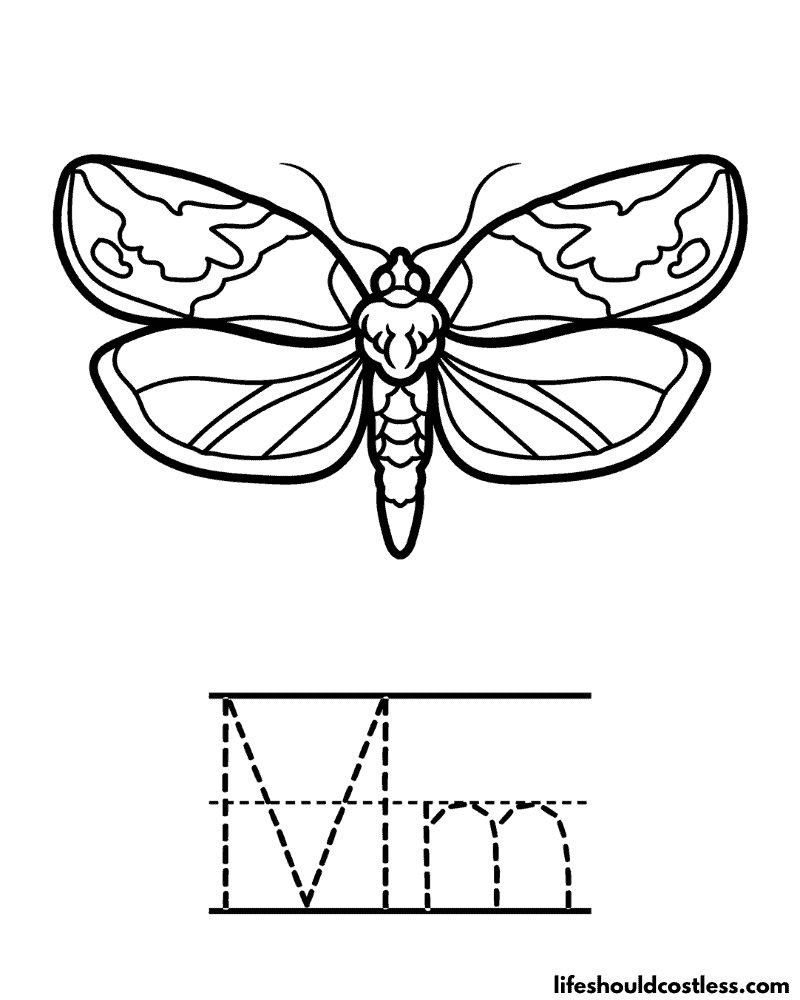
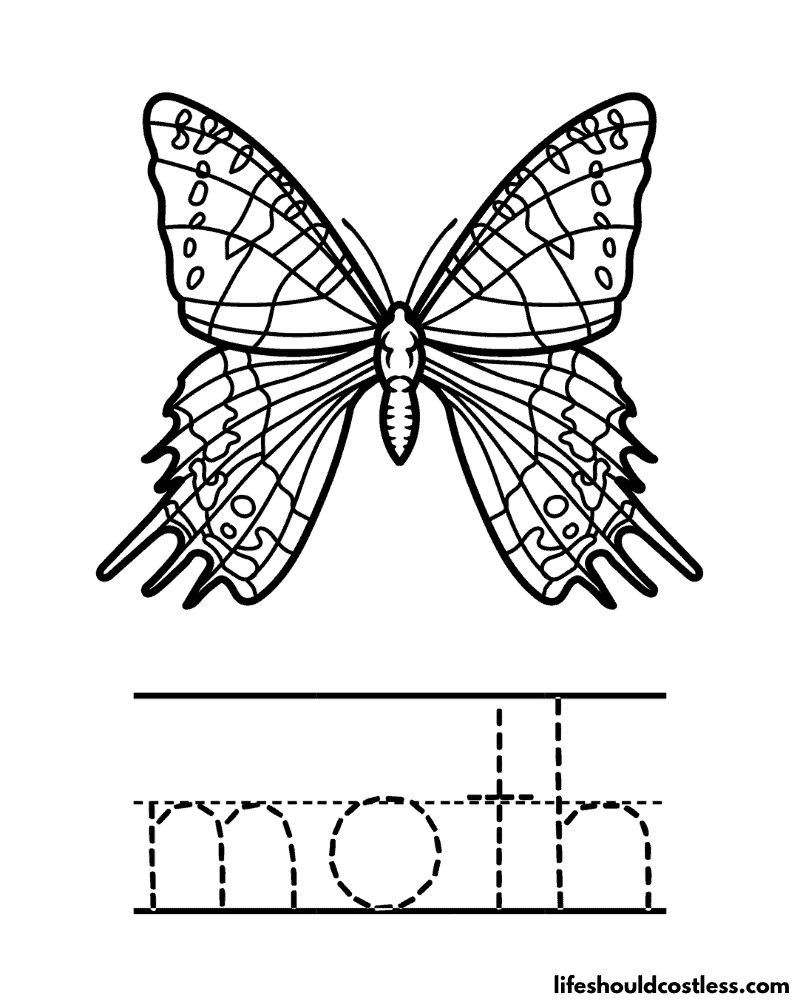
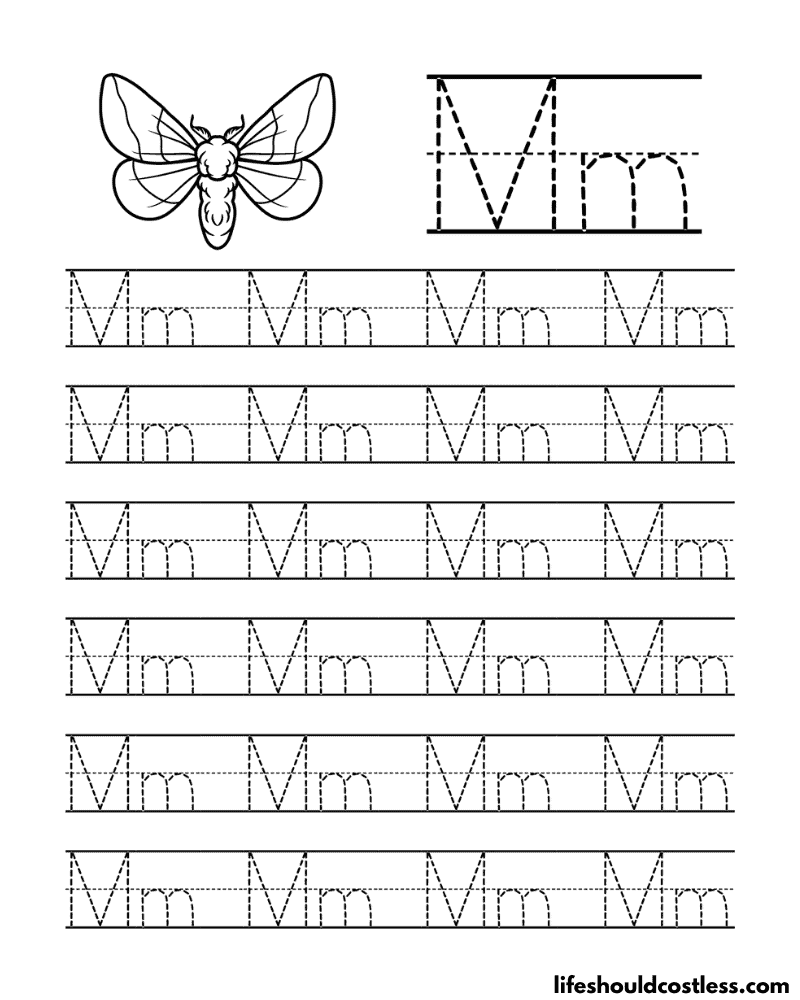
Various moth designs
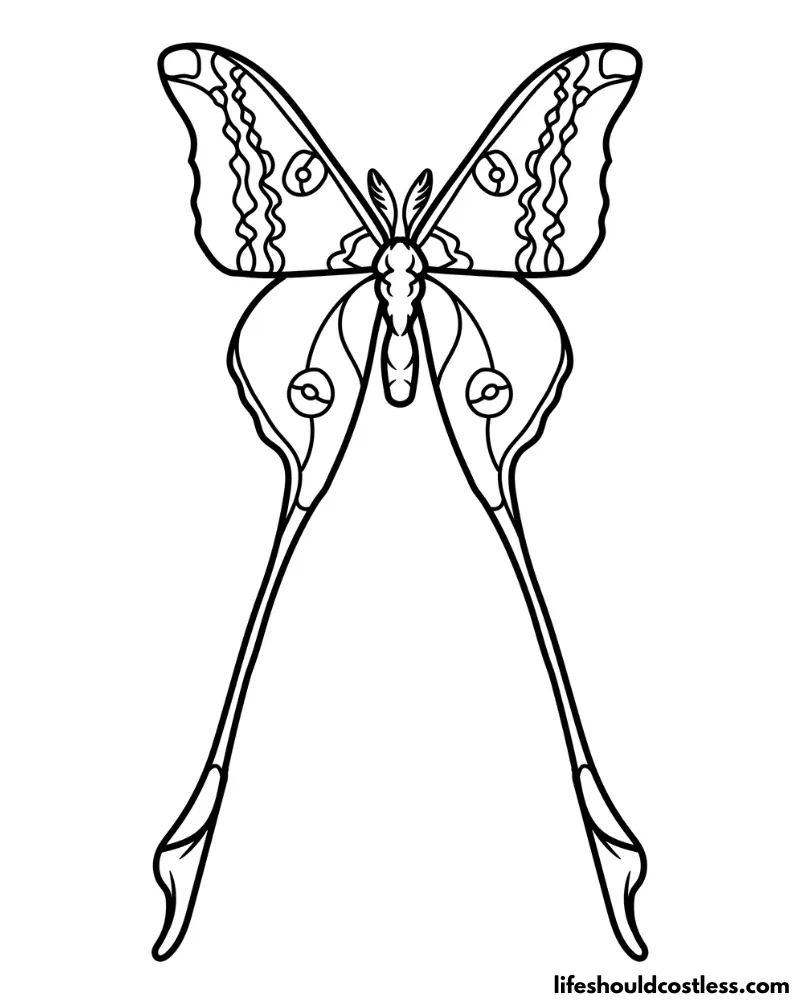
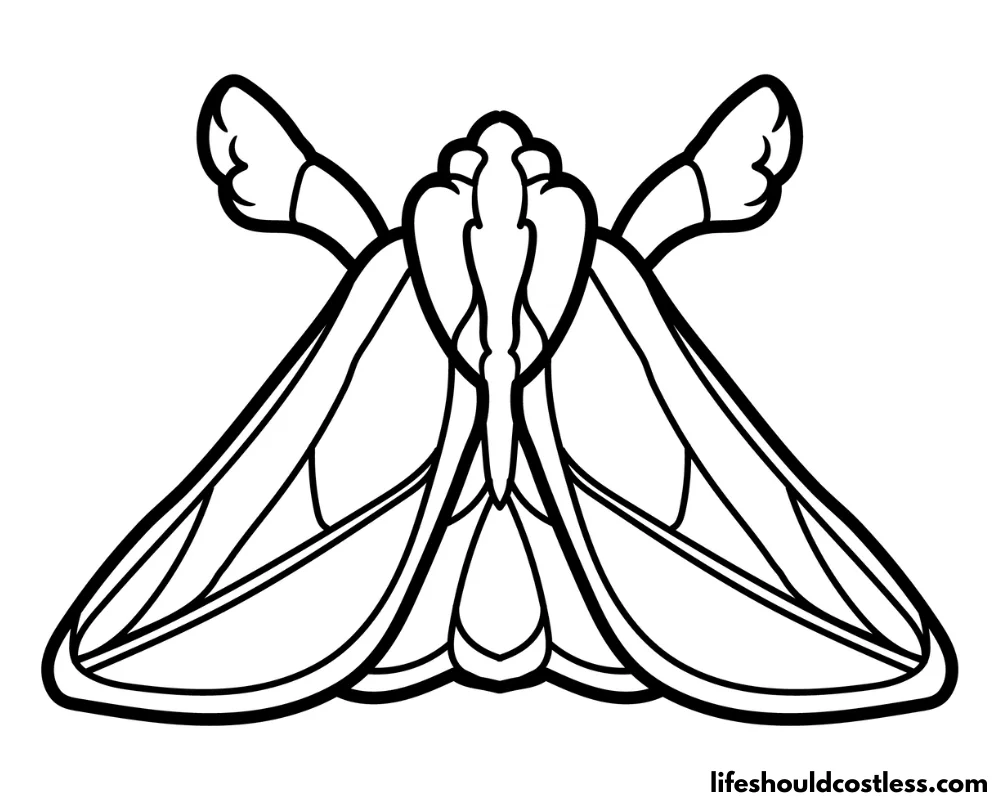
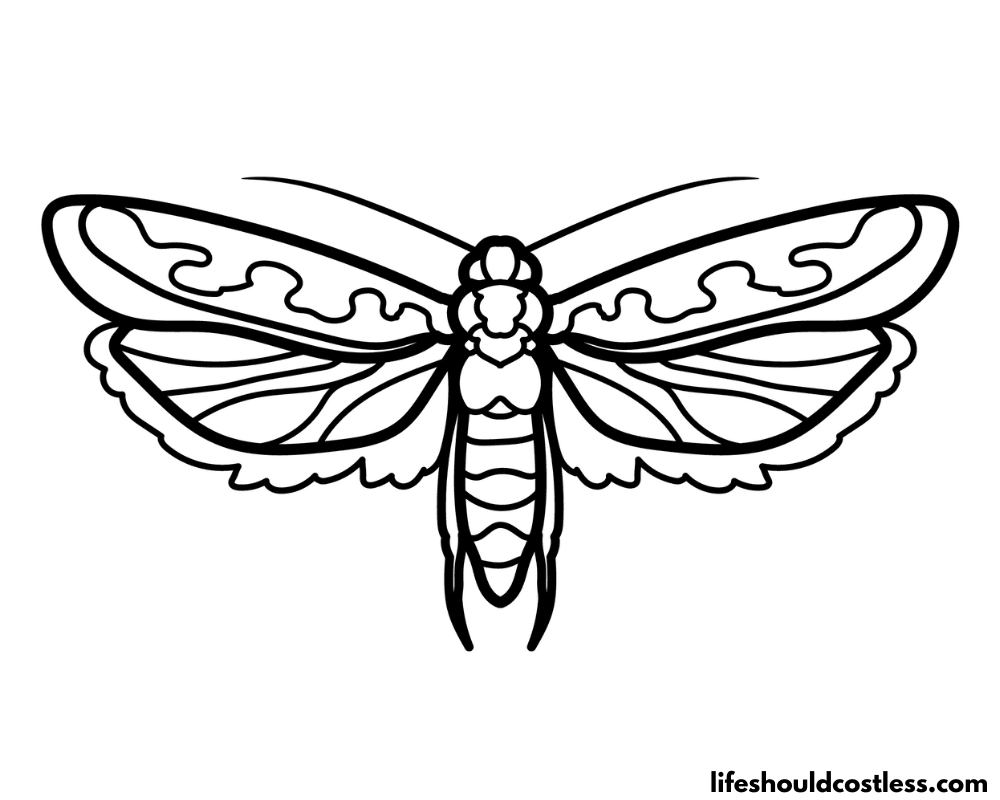
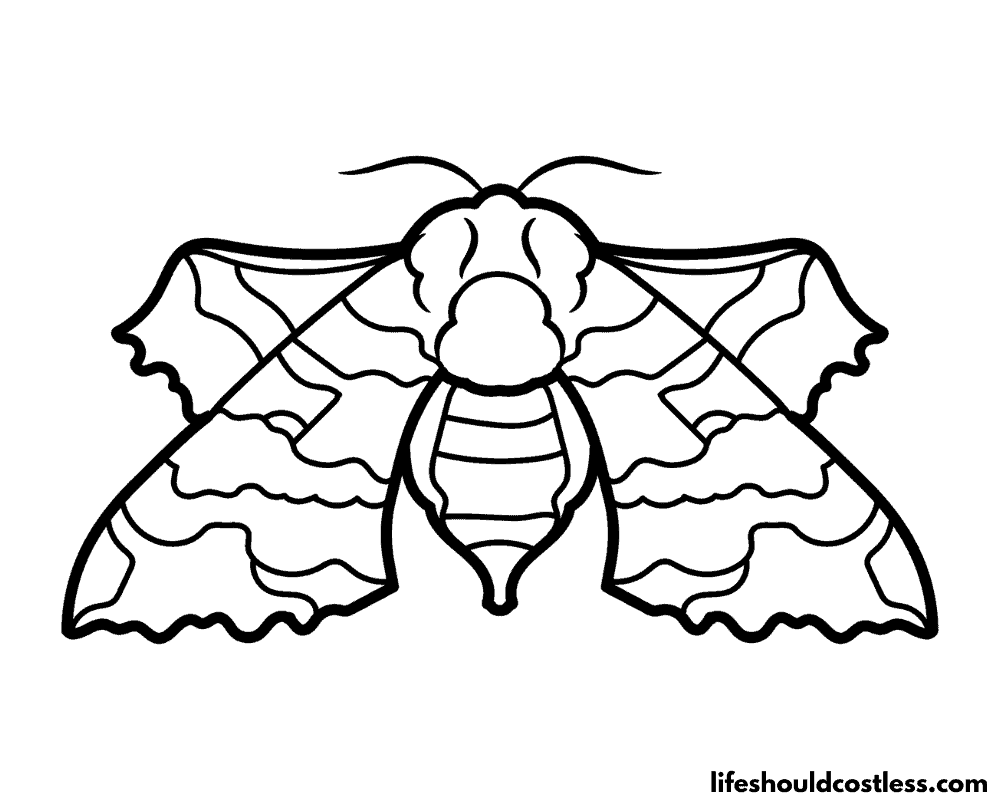
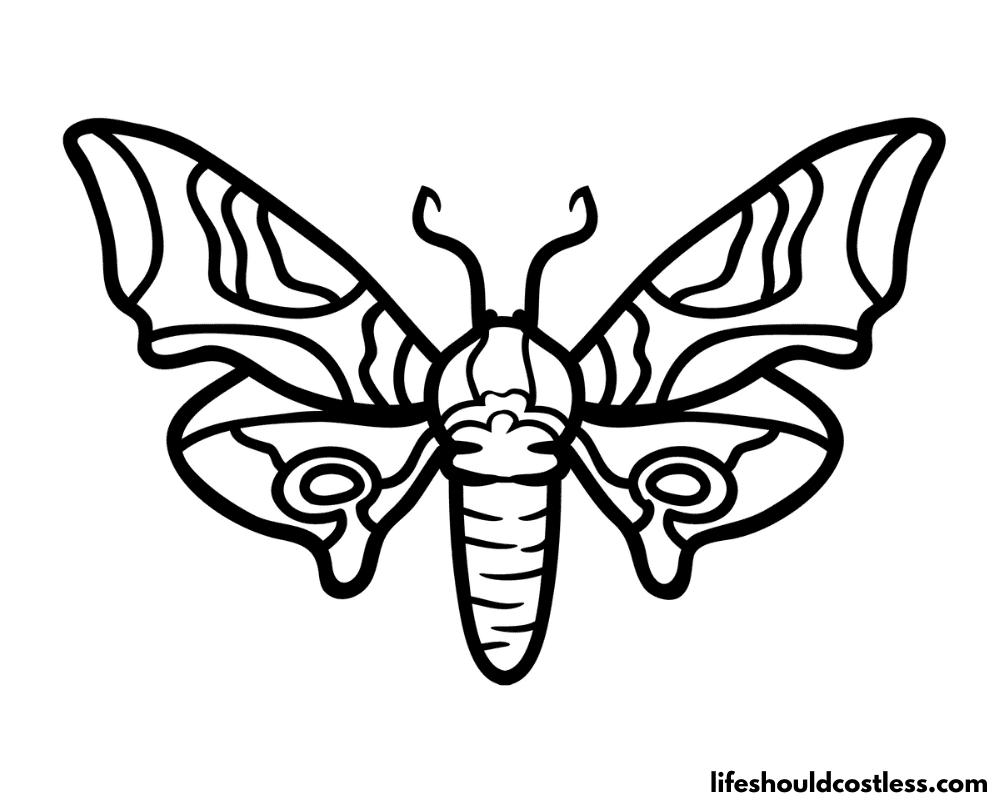
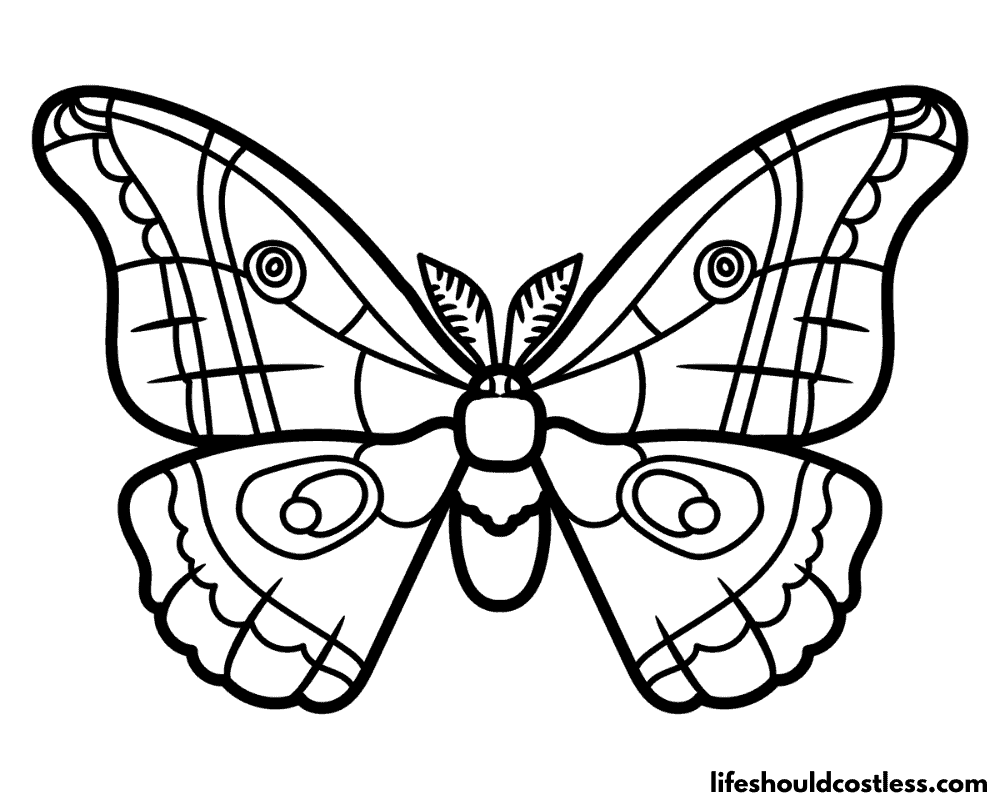
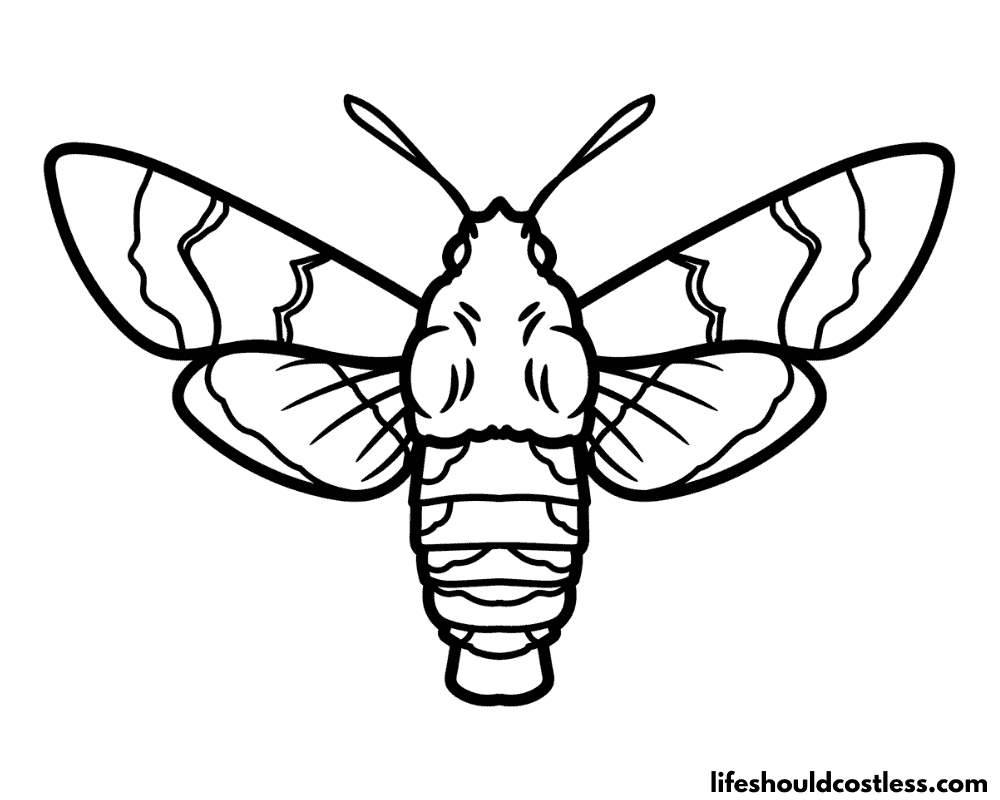
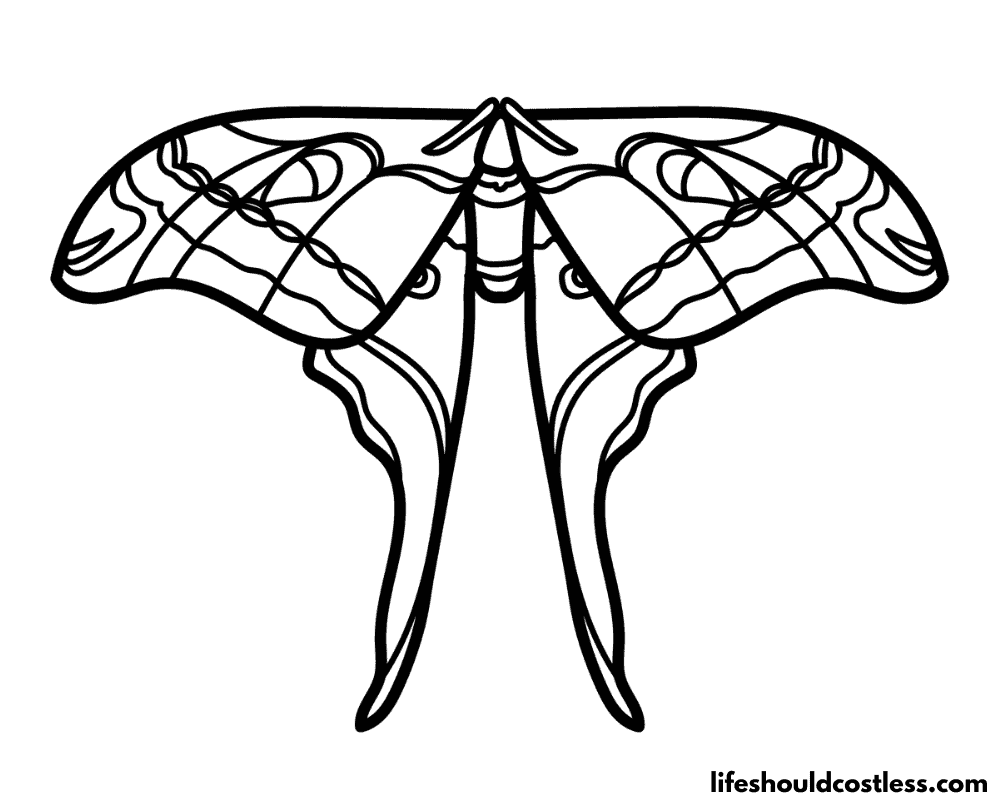
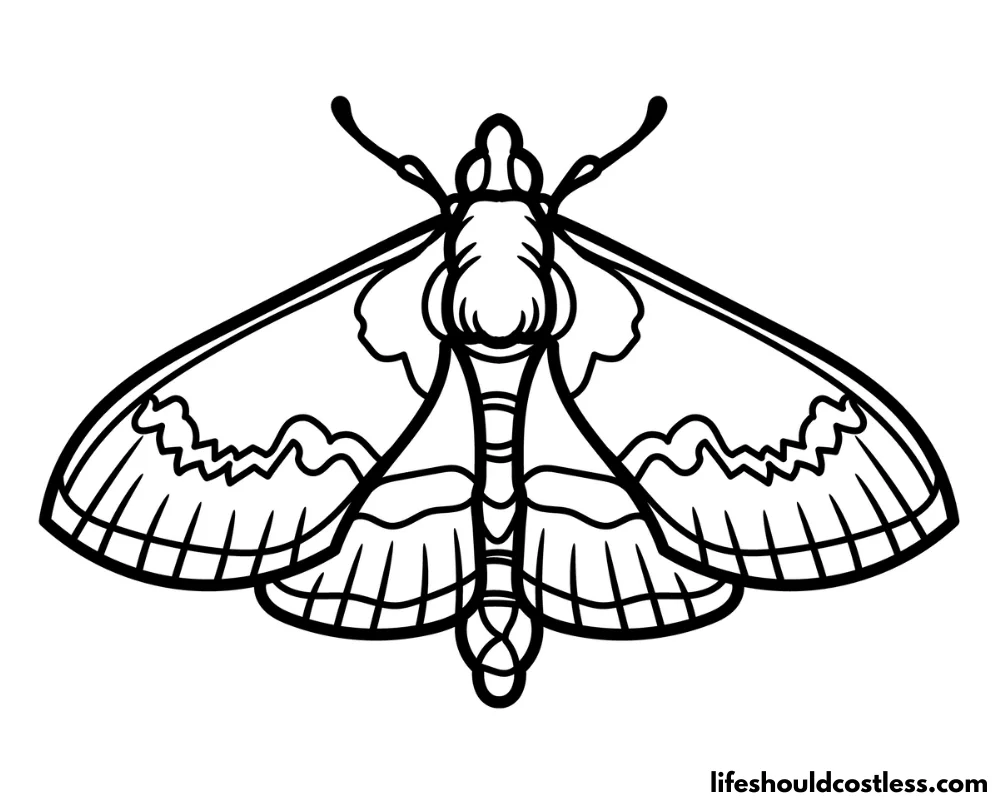
FAQ’s
Moths display a wide range of colors, but some of the most common colors observed in moth species include:
Brown and Tan: Many moth species have various shades of brown and tan, often in mottled patterns, which help them blend into tree bark or leaves for camouflage.
Gray: Gray is another common color, especially in moths that are active at night, as it allows them to remain inconspicuous during the day.
White: White or pale moths are quite common, and these colors can help reflect moonlight, aiding in night-time navigation.
Black or Dark Shades: Some moths have darker shades, including black, which can be used for absorbing heat during the day or for camouflage in certain environments.
Yellow and Orange: These colors are less common but are seen in some moth species. They can be warning colors or used for attraction.
Green: Green moths are usually found among leafy environments, where their coloration offers excellent camouflage.
Iridescent or Metallic Shades: Though not widespread, some moths display iridescent or metallic colors, which can be a form of defense or attraction.
Red and Pink: These are less common but can be found in some species, often used as warning colors or for mating displays.
It’s important to note that moth coloration can be highly variable and is influenced by factors like species, habitat, and evolutionary adaptations.
The colors mentioned are among the more common ones, but the moth world is vast and incredibly diverse, featuring a broad spectrum of colors and patterns.
*I will add more moth colour / color questions and answers as the questions get sent to me.
Conclusion
In conclusion, our moth coloring pages opens up a kaleidoscope of opportunities for creativity, relaxation, and learning.
As we have explored, moths are not just fascinating insects in terms of biology and ecology, but they also offer a rich canvas for artistic expression with their diverse range of colors and patterns.
Whether used as a tool for mindfulness, a way to connect with nature, or as an educational resource, coloring moth pictures provides a unique and enchanting experience.
They remind us of the beauty and complexity of these often-overlooked creatures, encouraging us to look closer at the natural world around us.
So, the next time you pick up a coloring page featuring a moth, remember you’re not just filling in colors; you’re stepping into a world where art and nature intertwine, creating a magical and enriching journey.
Thanks so much for stopping by my blog and supporting my endeavors to make people’s lives a little easier/better/more affordable.
If you liked this post, or found it helpful in any way, please make sure to share it with your family, friends, and co-workers via social media.
Or you could even send them the direct link via email. Whichever way you choose to spread the love, I super appreciate it! ~Sarah
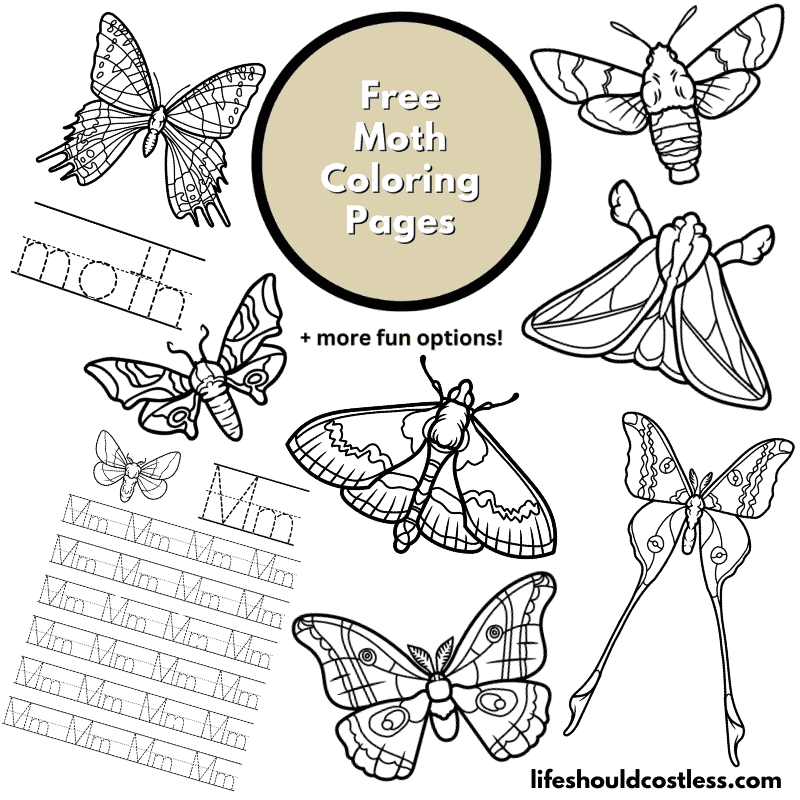
How To Follow & Support This Site
- If you would like to subscribe to my email list, go here.
- Make sure to follow along via social media, by going here.
- If you would like to learn how to really show your support to this site (at no cost to you), go here.
- If you would like to make a direct donation to the site, go here.
Check out my other free printables
- To see all of my free printables, go here.
- If you would like to see my index of free printable coloring pages, go here!
- To see all of my animal coloring pages, go here.
- To see all of my insect-related coloring pages, go here.
Otherwise, here are direct links to several of my other related posts that you’re also going to love:
Animals / Insects
Animals / Birds
Animals / Mammals
Other good resources for a printable moth
- https://animalcoloringpages.org/moth-coloring-page-adult-0001/
- https://www.cambridgebutterfly.com/wp-content/uploads/2020/04/Atlas-Moth-Colouring-Sheet.pdf
- https://www.dcr.virginia.gov/state-parks/document/vsp-luna-moth-coloring-sheet.pdf
*This post was originally shared to this blog on 01/30/2024, and has since been updated to improve user experience, possibly add video instruction, as well as to make it as shareable as possible across the social medias.
**Please note that I do try my hardest to provide factual, but easy to understand, information about each topic. If you notice a discrepancy in my coloring pages, facts, or see something that you deem “misinformation/incorrect” please make sure to notify me about it. I would prefer that you send me an email with a link to a more reputable resource on that subject, so that I can correct it as soon as possible. Thanks so much for helping this site become the best that it can be!
***Resources from djinkers were used in the production of this article.
